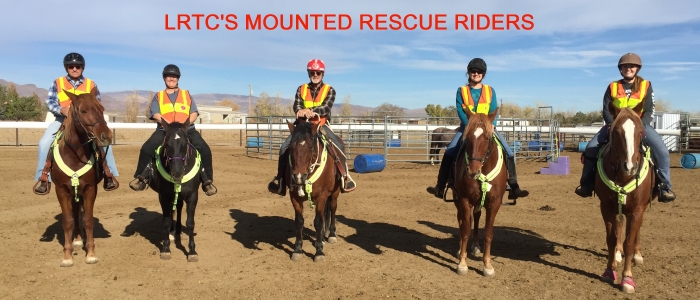|
|
LRTC Emergency Response Team
* Special Feature *
Meet the Mounted Team
|
PART THREE
(This feature is a continuation from Part Two.)
|
|
New Horses Being Developed
|
* NAPOLEON *
Napoleon was a neglect rescue that we picked up for Animal Services. Even in his distressed condition it was clear that this horse was brilliant. Larry named him "Napoleon" but "Einstein" would have probably been more fitting. Napoleon was feral when we picked him up but he came around extremely fast. We focused on bonding and ground school as he was a young horse that needed to mature before riding, as well as recover from malnutrition.
Napoleon is actually a half-mustang, his sire being an appaloosa stallion that bred a mustang mare.
Desensitizing Napoleon to objects - in this case the Häst Water Rescue Harness.
(This photo shows his condition during the first month of his rehabilitation.)
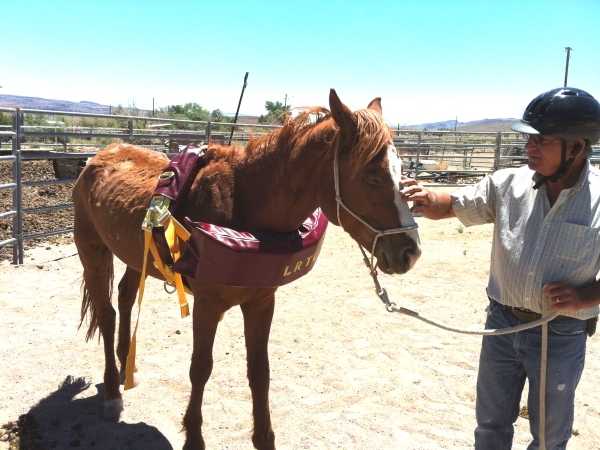
First day wearing a saddle. Responding to hand cues to stand on the tire pedestal.
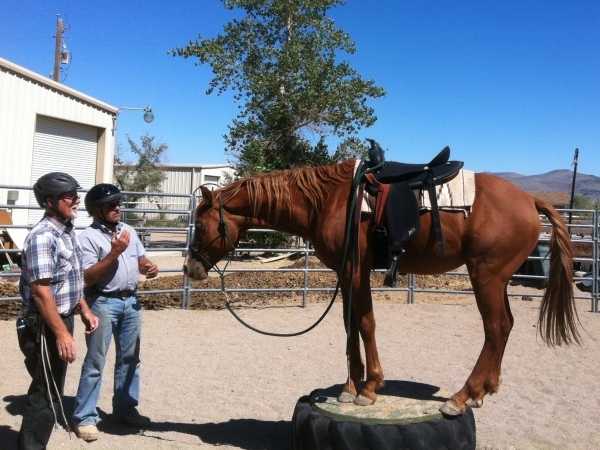
Second day under saddle. Working over the obstacles - stepping off the high deck.
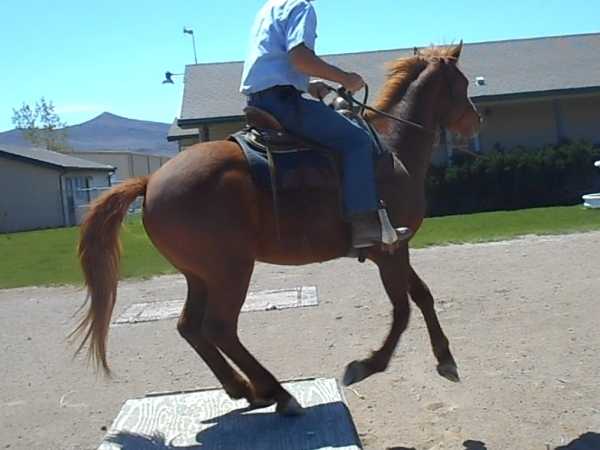
Second day under saddle. Completely relaxed with a rider.
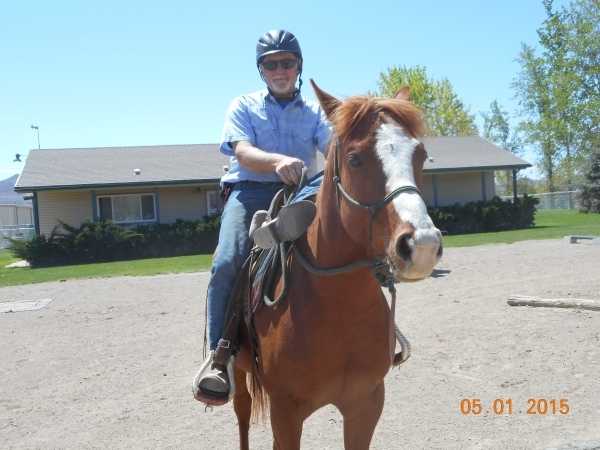
Third day under saddle. Safety check.
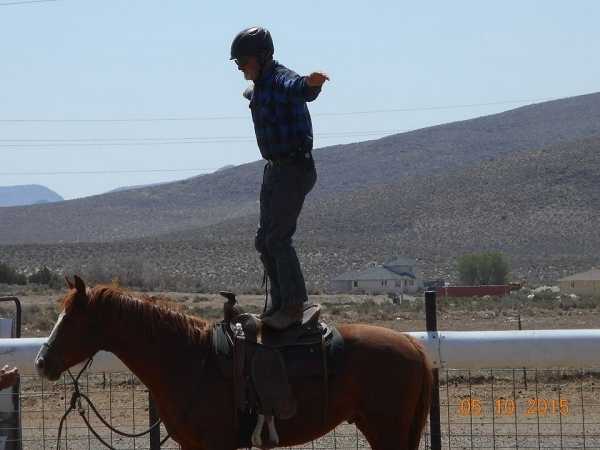
Although Napoleon now is clearly in much better physical condition, serious riding won't start until 2016. Meanwhile to keep him on track he will get to experience light work with occasional riders in addition to his ground schooling.
* TOBY *
Toby (originally known as "Nevada Joe") is a Virginia Range mustang that came from the 2015 Nevada B rescue. He reportedly had never been ridden but had received some high quality ground schooling. The veterinary records that came with him listed him as being four years old, however it turned out that he was closer to ten.
Toby is a delightful horse, very personable with people, and he would go along with whatever we asked of him. We climbed aboard and started working with him under saddle and he took to it so well we had no idea that he hadn't been ridden before. (We were told about his lack of saddle experience some weeks later.)
Larry on Toby, second day under saddle.
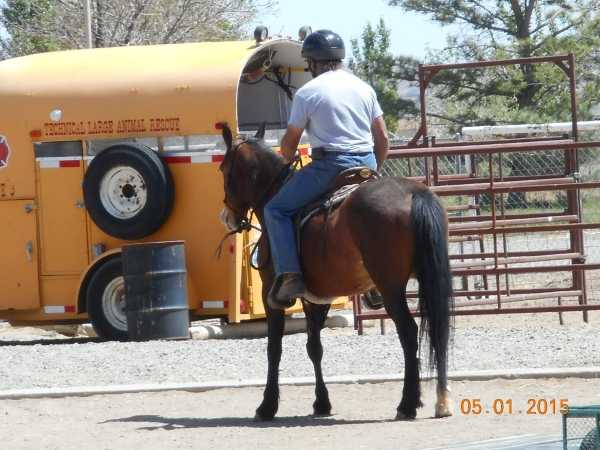
Second day under saddle, taking some fairly advanced obstacles.
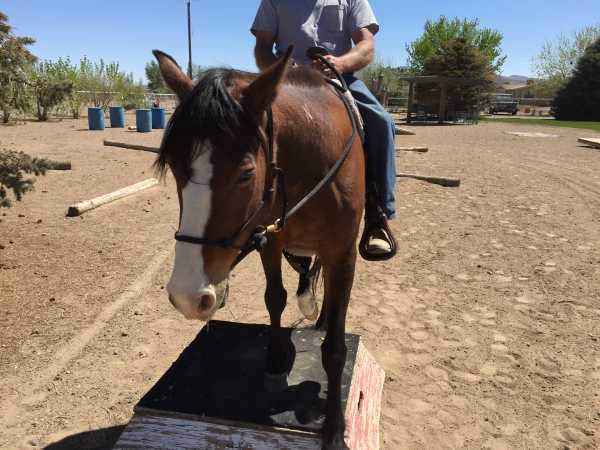
Second day under saddle, riding over the "log pile."

Third day under saddle, being silly but checking out how solid he would be.
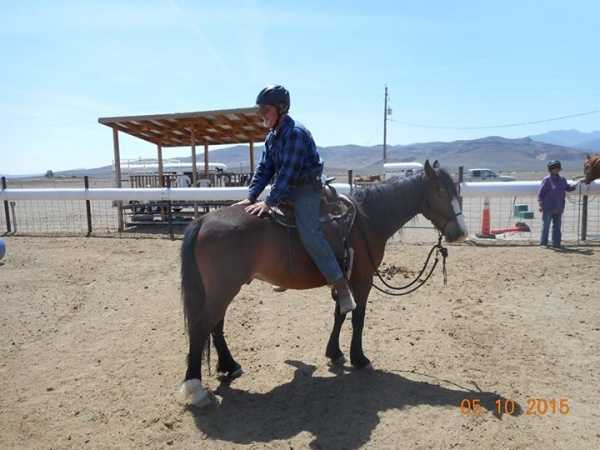
Third day under saddle. Standing at liberty next to a mounting block for a safety check.
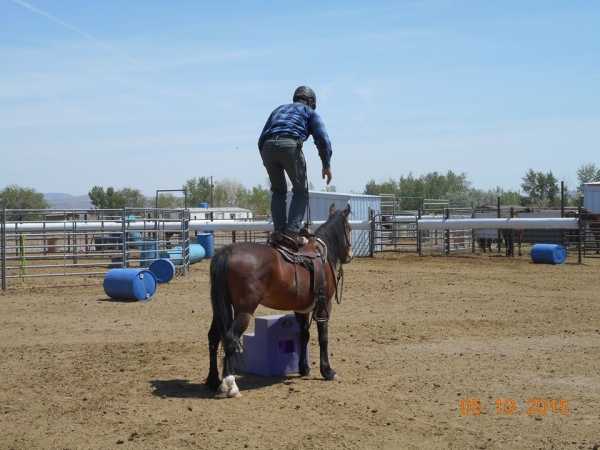
* BUDDY *
(Acquired on December 6, 2015)
Buddy is a Virginia Range mustang that was started under saddle by the
Inmate Saddle-Training Program in Carson City. He was acquired by one of our newest members, Paula Rowles, who saw that this horse had significant practical skills and bought him from another local resident.
Although Paula did some simple riding when she first looked at Buddy, the plan at this time is to work him on lead in challenging environments and cement their communications skills before engaging in serious saddle work. (And yes, we did to the "spook check" tricks of standing on his back, vaulting off in different directions and riding him while sitting backwards in the saddle.)
Buddy and Paula, first few minutes "on the lead."
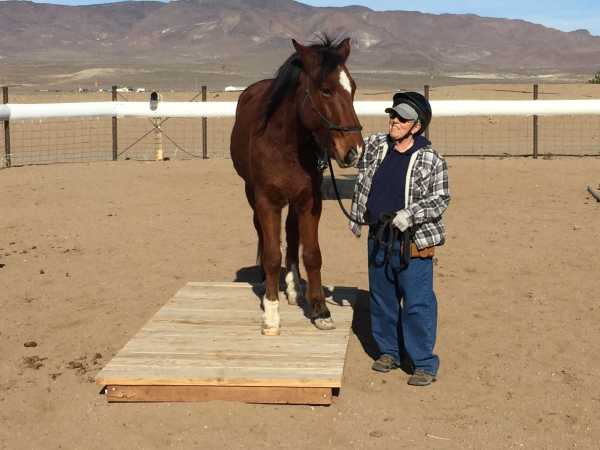
Getting right down to it - first day. On the step platform.
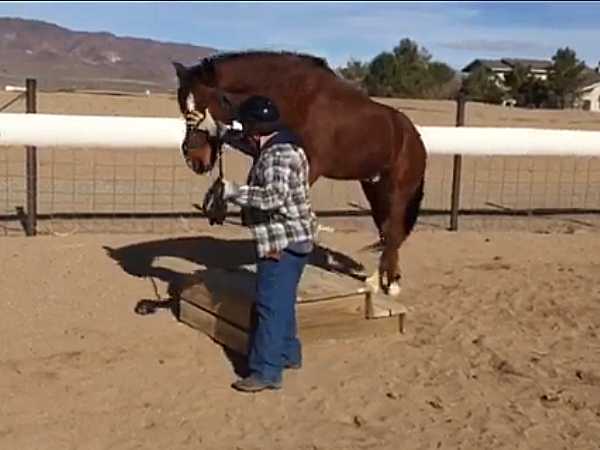
Second day of work. The obligatory walk through the "log pile."
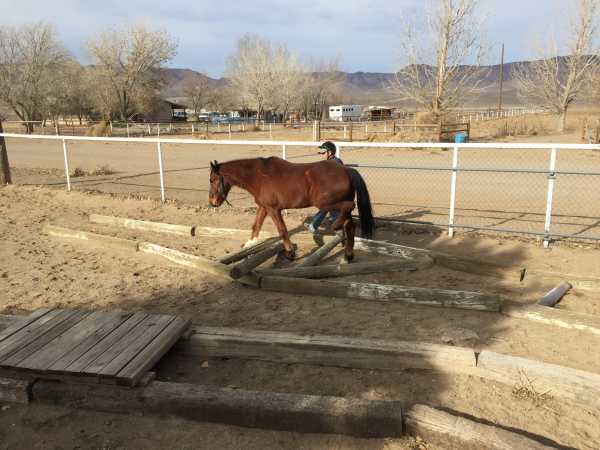
Second day of work. Taking the advanced obstacles, in this case the tall tire pedestal.
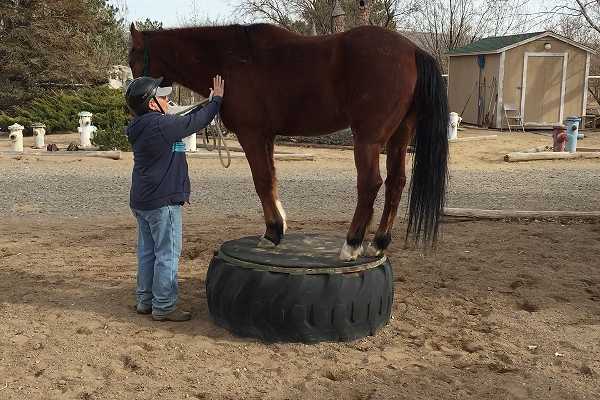
Buddy's story will be updated as he progresses.
* Please Note *
Before starting any saddle and rider activities with these horses, an appropriate amount of time was spent by the horses' handlers and future riders on desensitizing and confidence building. Performing somewhat advanced activities during beginning saddle work was merely an extension of the ground work. Recognizing the horses' level of confidence and maintaining supportive communication during these activities were critical to conducting these exercises safely.
It is our hope that these horses will make a good fit as range rescue mounts as well as be trustworthy trail mounts, so our strategy involves challenging the horses to think through various obstacles and "puzzles," while being careful not to push them beyond their confidence zone.
We also feel that it is important to mention that horses can vary greatly as to their overall sensitivity and natural confidence. Therefore approaches that work well with one horse may likely not achieve the same results over the same period of time with another. Understanding a horse's "horsonality" and needs are critical to producing safe results when engaging in higher risk activities.
For a more detailed discussion on how we encourage the kind of confidence and reliability shown here, please visit the KBR feature, Developing Confident Horses.
Press Back to return to the page which brought you here
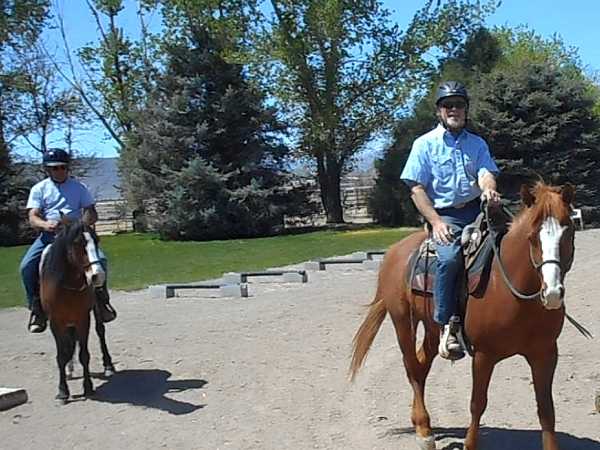
|


